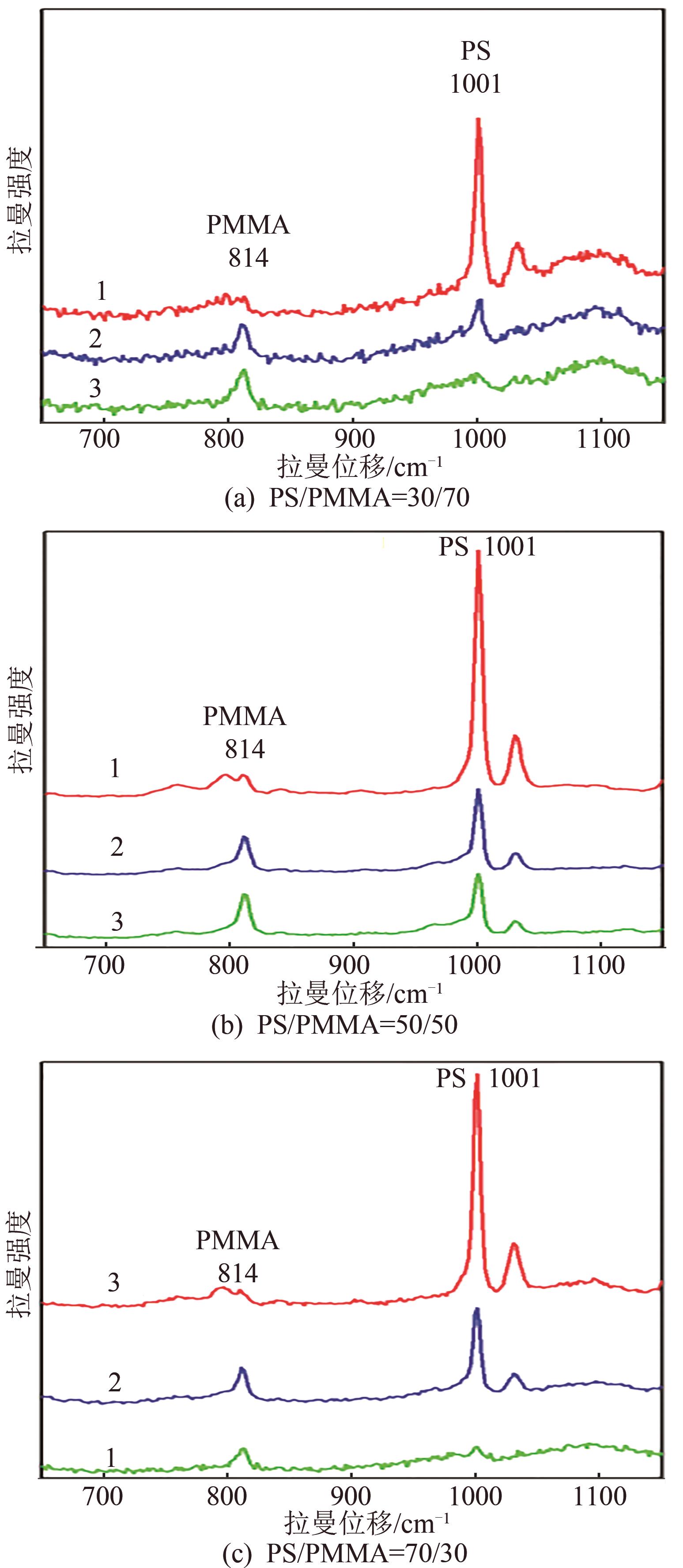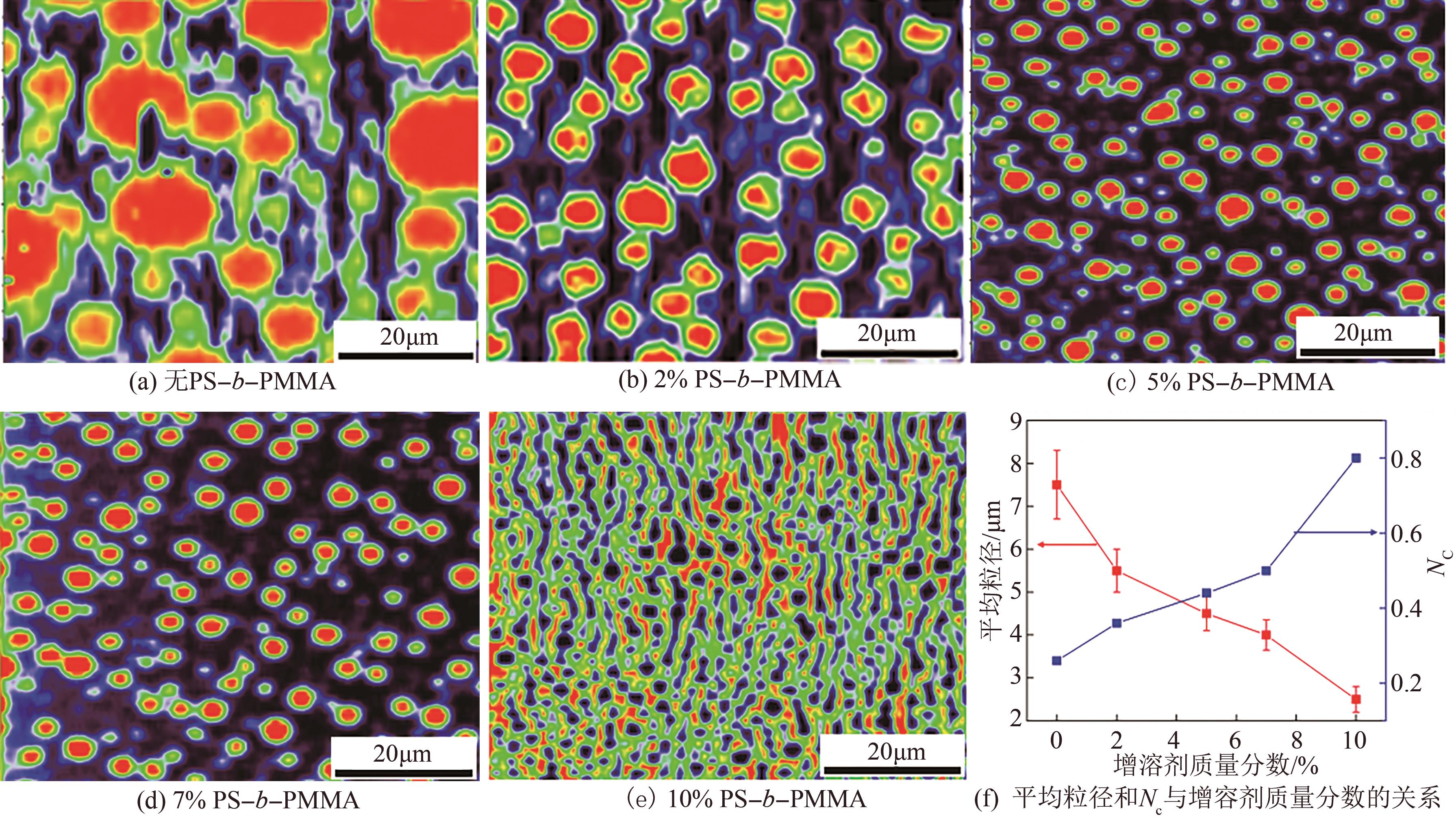| 1 |
IDE F, HASEGAWA A. Studies on polymer blend of nylon 6 and polypropylene or nylon 6 and polystyrene using the reaction of polymer[J]. Journal of Applied Polymer Science, 1974, 18(4): 963-974.
|
| 2 |
ROLAND C M, NGAI K L. Dynamical heterogeneity in a miscible polymer blend[J]. Macromolecules, 1991, 24(9): 2261-2265.
|
| 3 |
KARIM A, DOUGLAS J F, LEE B P, et al. Phase separation of ultrathin polymer-blend films on patterned substrates[J]. Physical Review E, 1998, 57(6): r6273.
|
| 4 |
EAGAN J M, XU J, DI GIROLAMO R, et al. Combining polyethylene and polypropylene: enhanced performance with PE/iPP multiblock polymers[J]. Science, 2017, 355(6327): 814-816.
|
| 5 |
ULCNIK-KRUMP M. Study of morphology influence on rheological properties of compatibilized TPU/SAN blends[J]. Journal of Applied Polymer Science, 2006, 100(3): 2303-2316.
|
| 6 |
PARAMESWARANPILLAI J, JOSEPH G, CHELLAPPAN R V, et al. The effect of polypropylene-graft-maleic anhydride on the morphology and dynamic mechanical properties of polypropylene/polystyrene blends[J]. Journal Polymer Research, 2015, 22(2): 1-11.
|
| 7 |
ZHANG Y, LI Y, ZHAO S, et al. Compatibility effect of radiation-grafting-functionalized styrene-butadiene-styrene on polyamide 6/styrene-butadiene-styrene blends[J]. Journal of Applied Polymer Science, 2008, 108(2): 1029-1036.
|
| 8 |
FAHMY A, MOHAMED T A, FRIEDRICH J F. XPS and IR studies of plasma polymers layer deposited from allylamine with addition of ammonia[J]. Applied Surface Science, 2018, 458: 1006-1017.
|
| 9 |
BAJPAI A K, BHATT R. Time of flight secondary ion mass spectrometry (ToF-SIMS) enabled analysis of inter-polymer phases formation in poly(diaminonaphthalene) doped conducting poly(vinyl alcohol) films[J]. Polymer, 2017, 110: 211-217.
|
| 10 |
GAMBINO T, ALEGRÍA A, ARBE A, et al. Applying polymer blend dynamics concepts to a simplified industrial system. A combined effort by dielectric spectroscopy and neutron scattering[J]. Macromolecules, 2018, 51(17): 6692-6706.
|
| 11 |
WANG D, RUSSELL T P. Advances in atomic force microscopy for probing polymer structure and properties[J]. Macromolecules, 2018,51: 3-24.
|
| 12 |
MARKWORT L, KIP B. Micro-Raman imaging of heterogeneous polymer systems: general applications and limitations[J]. Journal of Applied Polymer Science, 1996, 61(2): 231-254.
|
| 13 |
TANG F, BAO P, SU Z. Analysis of nanodomain composition in high-impact polypropylene by atomic force microscopy-infrared[J]. Analytical Chemistry, 2016, 88 (9): 4926-4930.
|
| 14 |
YE J, MIDORIKAWA H, AWATANI T, et al. Nanoscale infrared spectroscopy and AFM imaging of a polycarbonate/acrylonitrile-styrene/butadiene blend[J]. Microscopy Analysis, 2012, 26: 24-27.
|
| 15 |
SU W, KUMAR N, DAI N, et al. Nanoscale mapping of intrinsic defects in single-layer graphene using tip-enhanced Raman spectroscopy[J]. Chemical Communications, 2016, 52(53): 8227-8230.
|
| 16 |
KO J, PARK S G, LEE S, et al.Culture-free detection of bacterial pathogens on plasmonic nanopillar arrays using rapid Raman mapping[J]. ACS Applied Materials & Interfaces, 2018, 10(8): 6831-6840.
|
| 17 |
HOFFMANN G G, BÂRSAN O A, VAN DER VEN L G, et al.Tip-enhanced Raman mapping of single-walled carbon nanotube networks in conductive composite materials[J]. Journal of Raman Spectroscopy, 2017, 48(2): 191-196.
|
| 18 |
WANG M, VANTASIN S, WANG J, et al. Distribution of polymorphic crystals in the ring-banded spherulites of poly(butylene adipate) studied using high-resolution raman imaging[J]. Macromolecules, 2017, 50(8): 3377-3387.
|
| 19 |
MORGAN R L, HILL M J, BARHAM P J, et al. A study of the phase behaviour of polyethylene blends using micro-Raman imaging[J]. Polymer, 2001, 42(5): 2121-2135.
|
| 20 |
HUAN S, LIN W, SATO H, et al. Direct characterization of phase behavior and compatibility in PET/HDPE polymer blends by confocal Raman mapping[J]. Journal of Raman Spectroscopy, 2007, 38(3): 260-270.
|
| 21 |
XUE L, LI W, HOFFMANN G G, et al. High-resolution chemical identification of polymer blend thin films using tip-enhanced Raman mapping[J]. Macromolecules, 2011, 44(8): 2852-2858.
|
| 22 |
TANAKA K, TAKAHARA A, KAJIYAMA T. Film thickness dependence of the surface structure of immiscible polystyrene/poly(methyl methacrylate) blends[J]. Macromolecules, 1996, 29(9): 3232-3239.
|
| 23 |
THOMAS S, PRUD R E. Compatibilizing effect of block copolymers in heterogeneous polystyrene/poly(methyl methacrylate) blends[J]. Polymer, 1992, 33(20): 4260-4268.
|
| 24 |
LIU W, PANG Y, WANG K, et al. Structure evolution driven by phase separation and the corresponding foaming behavior of polystyrene/poly(methyl methacrylate) blends via a batch foaming process[J]. Journal of Applied Polymer Science, 2018, 135(39): 46704.
|
| 25 |
SEO Y, JANG S, AHN S, et al. phase behavior of 18-arm star-shaped polystyrene-block-poly(methyl methacrylate) copolymers with different second block initiations[J]. Macromolecules, 2018, 51(7): 2750-2755.
|
| 26 |
MATSUSHITA A, REN Y, MATSUKAWA K, et al. Two-dimensional Fourier-transform Raman and near-infrared correlation spectroscopy studies of poly(methyl methacrylate) blends: 1. Immiscible blends of poly(methyl methacrylate) and atactic polystyrene[J]. Vibrational spectroscopy, 2000, 24(2): 171-180.
|
| 27 |
KOULIC C, YIN Z, PAGNOULLE C, et al. Premade versus in situ formed compatibilizer at the PS/PMMA interface: contribution of the Raman confocal microscopy to the fracture analysis[J]. Polymer, 2001, 42(7): 2947-2957.
|
| 28 |
TOMBA J P, PASTOR J M. Confocal Raman microspectroscopy with dry objectives: a depth profiling study on polymer films[J]. Vibrational Spectroscopy, 2007, 44(1): 62-68.
|
| 29 |
MANSON J A. Polymer blends and composites[M]. Berlin: Springer Science & Business Media, 2012.
|
| 30 |
HU C L, CHEN X D, CHEN J, et al. Observation of mutual diffusion of macromolecules in PS/PMMA binary films by confocal Raman microscopy[J]. Soft Matter, 2012, 8(17): 4780-4787.
|
| 31 |
KAPLAN D S. Structure-property relationships in copolymers to composites: molecular interpretation of the glass transition phenomenon[J]. Journal of Applied Polymer Science, 1976, 20(10): 2615-2629.
|
| 32 |
DAI K H, KRAMER E J, SHULL, K R. Interfacial segregation in two-phase polymer blends with diblock copolymer additives: the effect of homopolymer molecular weight[J]. Macromolecules, 1992, 25(1): 220-225.
|
| 33 |
DAI K H, WASHIYAMA J, KRAMER E J. Segregation study of a BAB triblock copolymer at the A/B homopolymer interface[J]. Macromolecules, 1994, 27(16): 4544-4553.
|
| 34 |
VALERA T S, MORITA A T, DEMARQUETTE N R. Study of morphologies of PMMA/PP/PS ternary blends[J]. Macromolecules, 2006, 39(7): 2663-2675.
|
 ), 田杜1, 李奇1, 钟敏1, 胡成龙1(
), 田杜1, 李奇1, 钟敏1, 胡成龙1( ), 纪红兵2(
), 纪红兵2( )
)
 ), TIAN Du1, LI Qi1, ZHONG Min1, HU Chenglong1(
), TIAN Du1, LI Qi1, ZHONG Min1, HU Chenglong1( ), JI Hongbing2(
), JI Hongbing2( )
)






